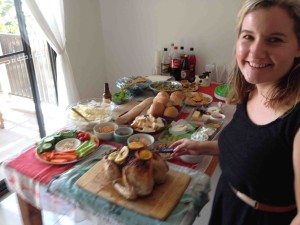In this retrospective study, typing ability, discriminatory power, and concordance between typing results obtained on 123 Campylobacter jejuni turkey isolates, collected in 1998, within 14 different farms, applying multilocus sequence typing (MLST), pulsed-field gel electrophoresis (PFGE), antibiotic resistance profile, and virulence gene pattern, were assessed and compared.
 Overall, 33 sequence types, 28 pulsotypes, 10 resistotypes, and 5 pathotypes were identified. MLST and PFGE showed the better discriminatory ability (i.e., Simpson’s diversity index >0.90) as well as unidirectional (i.e., Wallace and adjusted Wallace coefficients >0.86) and bidirectional (i.e., adjusted Rand coefficient >0.60) concordance.
Overall, 33 sequence types, 28 pulsotypes, 10 resistotypes, and 5 pathotypes were identified. MLST and PFGE showed the better discriminatory ability (i.e., Simpson’s diversity index >0.90) as well as unidirectional (i.e., Wallace and adjusted Wallace coefficients >0.86) and bidirectional (i.e., adjusted Rand coefficient >0.60) concordance.
Moreover, both methods showed a good unidirectional and bidirectional concordance with the resistotype. On the contrary, the congruence of both genotyping methods and resistotype with the pathotype seemed due to chance alone. A clonal relationship was identified among 66.7% of the isolates. Furthermore, 59.7% of the investigated isolates were resistant to two or more antimicrobials and 92% to tetracycline.
All the isolates harbored cadF and pldA genes, whereas a flaA gene product and a cdtB gene product were amplified from 85.4% and 79.7% of the isolates, respectively, using the primers designed by Bang et al. (2003).
 The results of this study clarify the level of genetic diversity among the C. jejuni originating from turkeys. MLST level of correlation with PFGE, resistotype, and pathotype is assessed. This result supports the selection of type and number of typing methods to use in epidemiological studies. Finally, the identification of clonal complexes (i.e., groups of profiles differing by no more than one gene from at least one other profile of the group using the entire Campylobacter MLST database) shared between turkey and human isolates suggests that turkeys could be a possible source of Campylobacter infection.
The results of this study clarify the level of genetic diversity among the C. jejuni originating from turkeys. MLST level of correlation with PFGE, resistotype, and pathotype is assessed. This result supports the selection of type and number of typing methods to use in epidemiological studies. Finally, the identification of clonal complexes (i.e., groups of profiles differing by no more than one gene from at least one other profile of the group using the entire Campylobacter MLST database) shared between turkey and human isolates suggests that turkeys could be a possible source of Campylobacter infection.
Typing of Campylobacter jejuni isolated from turkey by genotypic methods, antimicrobial susceptibility, and virulence gene patterns: a retrospective study
Gerardo Manfreda, Antonio Parisi, Alessandra De Cesare, Domenico Mion, Silvia Piva, and Renato G. Zanoni
Foodborne Pathogens and Disease
doi:10.1089/fpd.2015.2048.
